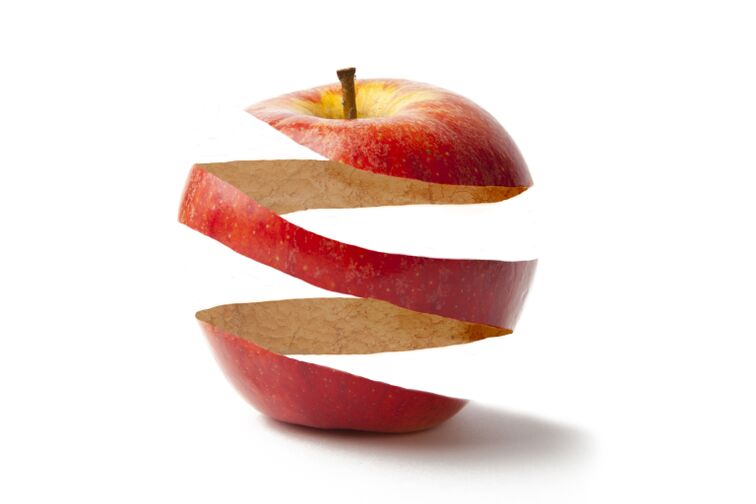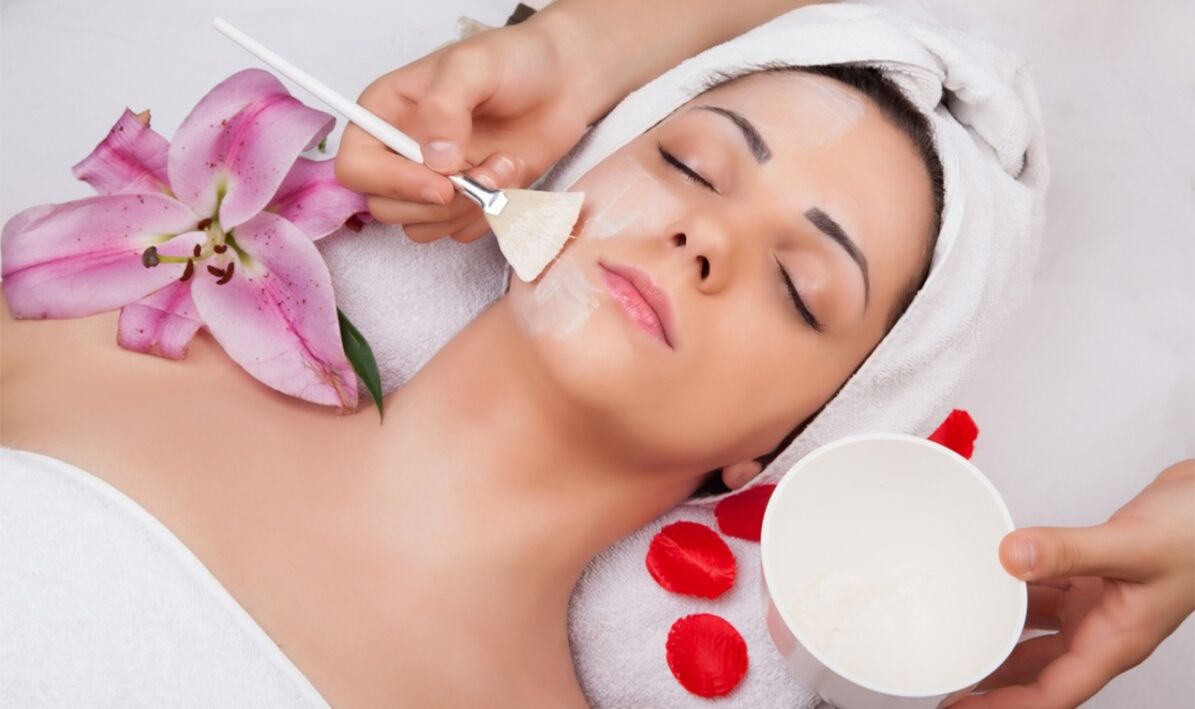Is it possible to lose ten years with peeling? Yes, but not all types are equally effective. We will tell you which procedure is suitable for skin rejuvenation.

What is anti-aging peeling?
Frankly, any peeling is rejuvenating, because this procedure forces the skin to replace old cells with new ones. Naturally, young and fresh looks better than old and boring. But among the large number of peeling varieties, there are several options that are especially good for aging skin. That is, among other things, they have a lifting effect.
Varieties by depth of impact.
Aged skin, marked by wrinkles and age spots, which has lost its elasticity and tone, needs a fairly deep effect: a cycle of medium peels that act on living cells and not on dead skin flakes.

Exfoliating, like peeling an apple, removes a layer of damaged skin cells. Peeling, which gives a pronounced result, requires some sacrifices.
- Causes peeling.
- Allow for a recovery period. You may have to take a couple of days off from work.
- For post-peeling care, it is necessary to stock up on special products.
However, the success of the event depends not only on the depth of the impact, but also on the selected exfoliating agent. As for deep peels, they are unpopular today due to increased trauma, a large number of side effects and risks. They are being successfully replaced by more delicate techniques.
Choosing a technique for an anti-aging procedure.
Modern cosmetology offers various procedures that are carried out in beauty salons or clinics.
Glycolic peeling
The most popular peeling, which is used for any problem. If you don't like something about the state of your skin, we sign up for a glycolic peel. Glycolic acid deservedly received this recognition. Perfectly renews the skin and eliminates imperfections, leaving it soft, radiant and hydrated.
The most surprising thing is that glycolic acid indirectly stimulates the production of collagen, that is, it affects the structure of the skin, restoring its elasticity and density. That is why glycolic peeling is called "remodeling. "
Peeling with trichloroacetic acid
Classic medium peeling. Trichloroacetic acid is considered the best for deep penetration into the skin. It causes noticeable damage and peeling of large plaques: a few days after the procedure, scabs form on the face and the skin begins to peel off. Yes, this is not the most pleasant period to endure. The main thing is not to pick off the scabs, not to touch them and let the skin remove them on its own.

Peeling with trichloroacetic acid causes peeling of large plaques. Patience will be rewarded: the skin will be radiant, soft and smooth after the first procedure. Maybe this is the end of the matter. But for deep wrinkles (as well as post-acne), the medium peel should be repeated.
Retinol (retinoic) peel
In addition to its yellow color, it is famous for the fact that it does not damage the upper layer of the epidermis, but rather acts on the basal layer, stimulating cell division. New cells rise to the surface en masse, replacing the superficial layers. Peeling does not always occur, it all depends on the specific composition of the peeling. But improved turgor and skin lifting are guaranteed.
laser photothermolysis
This is a fractional laser peeling, which at one time marked a revolution in hardware cosmetology. The effect is very similar to the result of medium peeling, although the principle of action is different. It is not the chemical agent that damages the skin, but the laser. It is uniformly "stitched" with thousands of laser microneedles at a strictly specified depth.
Because living and intact tissue remains between the damaged areas, the skin recovers quickly enough, without undesirable consequences.

Laser photothermolysis successfully replaced traumatic laser resurfacing and acid peeling kept me going. Peeling cannot be avoided, as well as redness and swelling (with sufficiently deep exposure). But the result is amazing!
Is it possible to perform an anti-aging peel at home?
The assortment of cosmetic brands includes formulas containing acids: fruit, salicylic and retinol. Use them according to the instructions. Lotions, night creams and concentrates - there are enough options and they give an excellent effect as home cosmetics. But we do not recommend posing as a cosmetologist and applying compositions that professionals work with on your face. It is dangerous.
Without special skills, it is possible to provoke contact dermatitis even with a minimal concentration of acids in the composition.
Review of anti-aging peeling products.
In our selection we include skin renewing products with acids and retinol.
Ampoules with glycolic acid.
Each ampoule, designed for single use, contains 10% glycolic acid, which smoothes the skin in one week. The serum is applied at night and in the morning it is recommended to use a cream with a filter. The complex peeling with glycolic acid stimulates skin renewal with very pleasant consequences in the form of soft and radiant skin. Vitamin C promotes anti-aging effects and an even tone, as does niacinamide, known for its properties against unwanted pigmentation.
Exfoliating night serum
Glycolic and citric acids gently exfoliate the skin. Vitamin C evens out the complexion. After just a week of using the serum, you will notice a difference, your skin will become smoother and dark spots will become less noticeable. One vial is designed for two uses.
Serum to correct deep wrinkles
An example of a home remedy with a high concentration of retinol (0. 2%) is enough to transform the skin: it evens out the complexion, reduces wrinkles and smoothes the texture. We recommend using the product once every 3 days and then every other day.







































